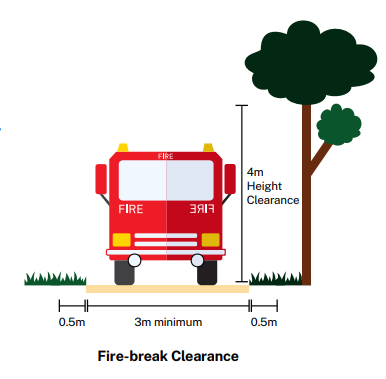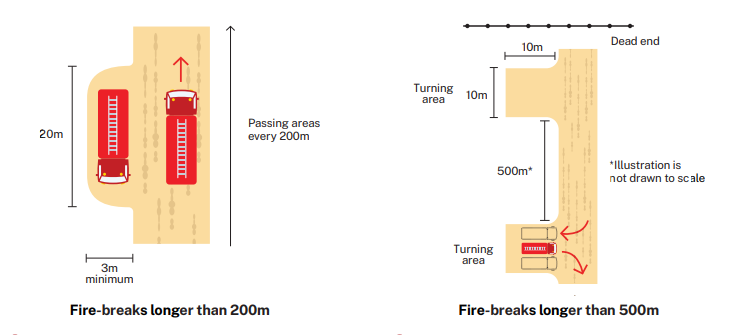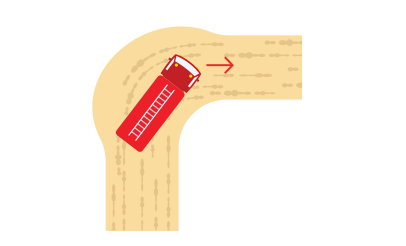Fire-break information
Published on Monday, 21 October 2024 at 10:13:43 AM

 A fire-break is a strip of land that has been cleared of all trees, shrubs, grass or
A fire-break is a strip of land that has been cleared of all trees, shrubs, grass or
other flammable materials to allow access for firefighting vehicles to all areas of
your property. It may also act as a barrier to help stop or slow a low-intensity fire.
Do I need a fire-break?
Your Local Government will determine whether you are legally required to construct and maintain
fire-breaks. However, from a practical perspective, if you have a large, or difficult to access property,
even if you’re not legally required to, you should consider installing breaks to assist firefighters
to access all areas, should a bushfire threaten.
What are the requirements for a fire-break?
The legal requirements for fire-breaks vary across local governments, however as a minimum
we recommend your fire-breaks:
• Are at least three metres wide
to mineral earth (clear of any trees, shrubs,
grass or other flammable material).
• Are cleared for an additional 0.5m either
side - this doesn’t have to be to mineral earth,
however you should be able to walk or drive
over it, for example, grass.
• Are clear to a height of at least four metres –
overhanging branches can block access for
fire fighting vehicles or damage important
equipment like hoses, lights or aerials.
• Provide a circuit that connects to other
access routes, like your driveway or the road
and doesn’t lead to dead ends. It’s important
to ensure firefighters can escape in either
direction, as the way out may be blocked by
fire or other firefighting vehicles.
Things to consider:
Fire trucks can be very large and need a lot of space to move around. There are things you can do to
help keep firefighters safe and make it easier for them to defend your property.

If your fire-break is longer than 200m, If your fire-break is longer than 500m,
include areas at the side of the break for or if it must end in a dead end, include areas
trucks to pass each other. These should be to turn around – these should be at least
at least 3m wide (so 6m including your 10m x 10m and included every 500m and
fire-break) and 20m long. Include passing at any dead ends.
areas every 200m along your breaks.

Double the width of your breaks around
corners or sharp bends
If you require further information, please contact the Shire office 08 9827 1007 or gnpshire@gnowangerup.wa.gov.au